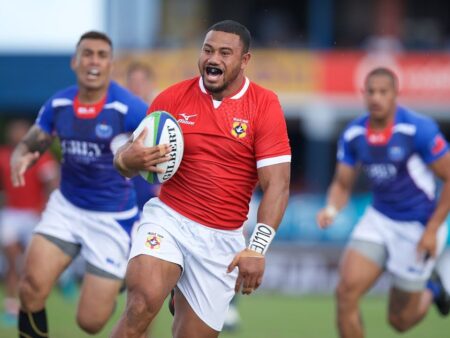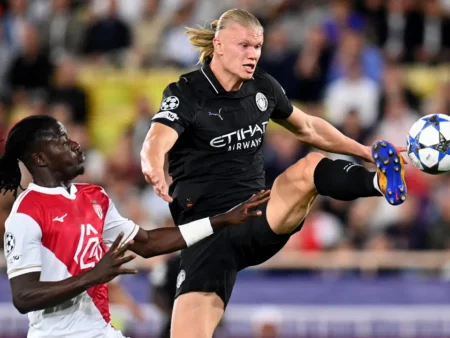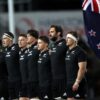
The beautiful game, much like life, often presents its participants with a delicate balance: the pursuit of immediate results versus the long-term vision. For the U.S. Men`s National Team (USMNT) and its esteemed head coach, Mauricio Pochettino, this dichotomy has never been more pronounced. With the 2026 World Cup steadily approaching, every friendly match transforms from a mere exhibition into a high-stakes laboratory. A recent 2-0 defeat to South Korea, a performance Pochettino himself downplayed in terms of scoreline, has, however, undeniably amplified calls for greater cohesion and clearer tactical identity. It appears the clock is not just ticking; it`s practically roaring.
The Striker`s Enigma: Who Leads the Line?
For years, the quest for a definitive, clinical No. 9 has been a narrative thread woven deep into the fabric of USMNT discussions. It’s a position that demands both individual brilliance and seamless integration, yet it remains a puzzle Pochettino is actively trying to solve. The recent international window presented Josh Sargent and Folarin Balogun with prime opportunities to stake their claim, though with differing outcomes. Sargent, despite a promising club form, found himself largely isolated against South Korea, managing a meager 17 touches and zero shots in 62 minutes. One might almost hear a collective sigh from the fan base, as a familiar pattern of international drought continued.
Conversely, Balogun`s late introduction injected a palpable sense of urgency and threat, registering four shots in just 28 minutes. This contrast, while not a definitive verdict, offers a glimpse into the tactical considerations at play. Is Pochettino seeking a target man to hold up play, or a more dynamic, pace-oriented forward to exploit spaces? The answer, it seems, hinges on the broader offensive strategy, and the luxury of time for extensive trials is rapidly diminishing. The irony isn`t lost: in a sport often decided by a singular moment of brilliance, the USMNT`s most critical position remains shrouded in strategic ambiguity.
Defensive Chess: The Backline Dilemma
Beyond the offensive conundrum, Pochettino`s defensive architecture is also under a microscope. Against South Korea, the initial back-four configuration struggled, leading to two first-half concessions and a game managed perfectly by the visitors. The subsequent tactical shift to a back three in the second half, featuring Chris Richards, Tristan Blackmon, and veteran Tim Ream, visibly improved defensive solidity, conceding only one shot on target.
This tactical flexibility is commendable, showcasing Pochettino`s willingness to adapt. However, the consistent oscillation between formations can inadvertently hinder the development of a settled defensive unit. While a coach must be prepared for various game states, establishing a primary, well-drilled system is crucial for instilling confidence and understanding among players. Pochettino`s acknowledgment that he might “take some risks” with future setups suggests a continued exploratory phase. The challenge lies in refining these experiments into a robust, reliable defensive structure before the unforgiving demands of the World Cup stage. A solid foundation, after all, is rarely built on shifting sands.
The Talent Pool Experiment: Forging Future Stars or Fracturing Foundations?
Pochettino has openly described these September friendlies as a “final chance” for his player pool expansion project, a philosophy he robustly defended amidst criticism of squad cohesion. Indeed, with 14 different lineups in 17 matches, the USMNT has, at times, resembled a revolving door more than a unified force. The rationale is sound: identify every viable candidate, prepare for injuries, and build robust squad depth. The World Cup, as Pochettino rightly points out, is no place for `tests.`
However, the pursuit of depth comes with a cost: the invaluable currency of team chemistry. Football, at its heart, is a collective endeavor, and the fluid interplay born from consistent partnerships cannot be rushed. The challenge, therefore, is to integrate newcomers and test capabilities without sacrificing the essential bonds that underpin a successful team. Players like Malik Tillman, whose fitness concerns exemplify the delicate balance, represent the high-wire act Pochettino is performing. The intention to foster competition – “Tillman needs to know there’s another guy in behind pushing, okay?” – is clear. But can this internal competition solidify into external synergy in time?
Conclusion: The Countdown to Cohesion
The journey to the World Cup is a marathon, not a sprint, but the final miles are now upon the USMNT. Mauricio Pochettino`s tenure has been characterized by a philosophical approach to team building, emphasizing opportunity and tactical versatility. Yet, the stark reality of results and performance metrics demands a tangible progression from experimentation to optimization.
The upcoming matches are no longer just about identifying individual talent; they are about forging a collective identity, refining tactical blueprints, and, crucially, building an unbreakable sense of cohesion. The USMNT stands at a critical juncture, balancing the promise of new talent with the imperative of immediate improvement. As the World Cup countdown continues, Pochettino’s ultimate success will hinge on his ability to transform a diverse collection of individuals into a singular, formidable force. The alchemist has his ingredients; now, he must produce gold.










